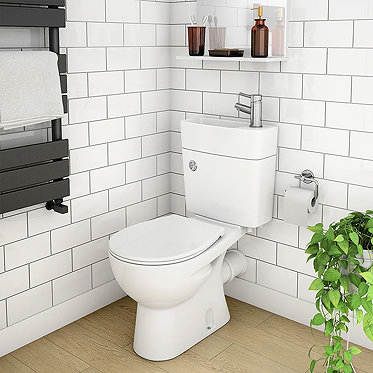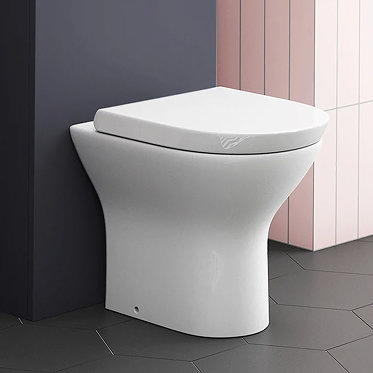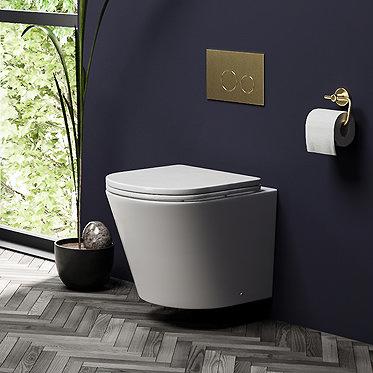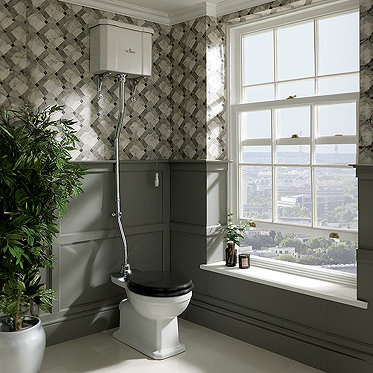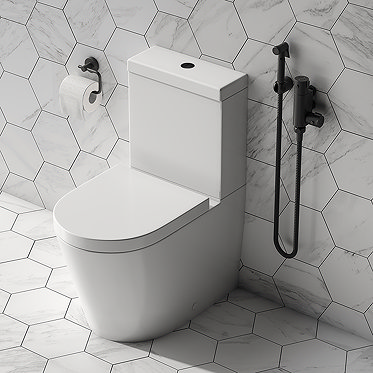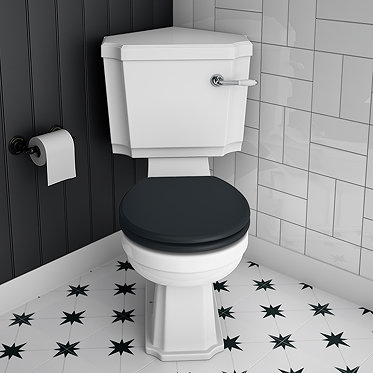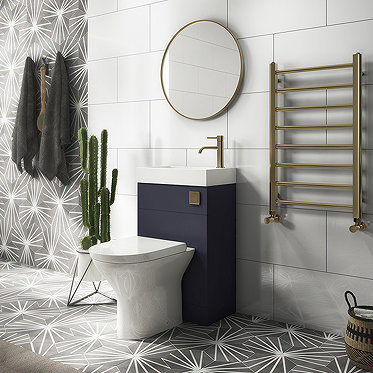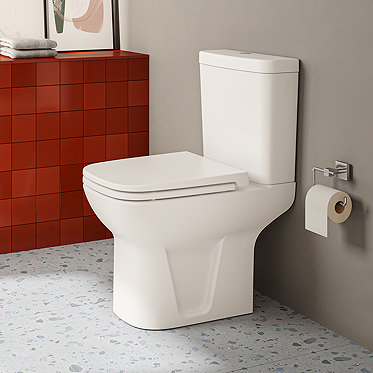UP TO 60% OFF SPRING SALE!
Free Delivery on Orders Over £499**
The Ultimate Toilet Buying Guide
The Ultimate Toilet Buying Guide
Discover a Range of Toilets That Suit Your Bathroom
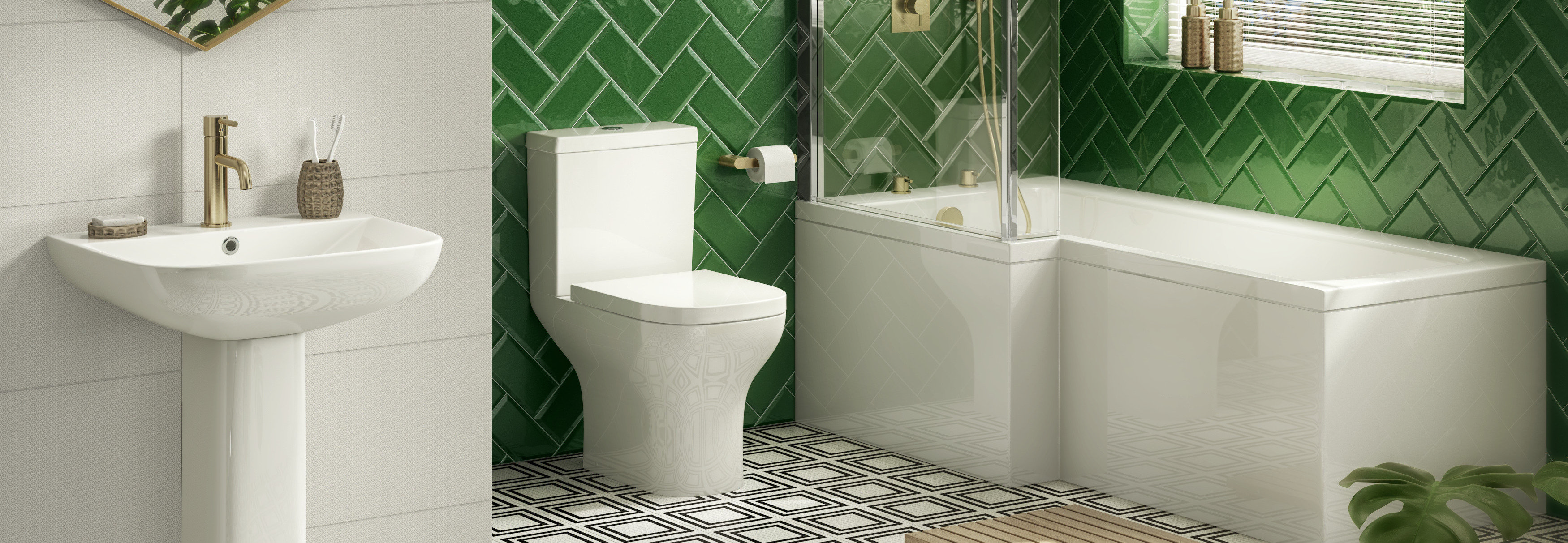
Welcome to the world of toilets - yes, that humble throne you sit upon daily, but never really think about until it’s time to choose a new one! It’s easy to overlook how essential a good toilet is until you're knee-deep (not literally, we hope) in the process of selecting the perfect one. From close-coupled models to futuristic smart toilets, this expert toilet buying guide will take you through everything you need to know about making that all-important porcelain decision.
Whether you're renovating your bathroom or just looking to upgrade, this guide is designed to help you choose the right toilet for your space, style, and budget. We’ll cover all the essentials, from toilet types and installation tips to water efficiency and the features you didn’t even know you needed.
Let’s get into it!
Click on the links below to jump to a section:
- Types of Toilets
- Key Considerations
- Money Saving Tips
- Popular Toilet Brands
- Water Efficiency
- Installation Tips
- Toilet Styles
- Maintenance Tips
- FAQs & Final Thoughts
For First-Time Buyers
Quick Overview
If this is your first time buying a toilet (or you just need a refresher), you’re in the right place. Let’s get into the basics — types of toilets, key considerations, and how to make sure your choice is both functional and stylish.
Glossary of Terms
- Close-Coupled: A toilet where the cistern sits directly on top of the bowl.
- Back-to-Wall: A toilet where the cistern is hidden within the wall or fitted furniture.
- Wall-Hung: A toilet mounted to the wall, floating above the floor, with the cistern concealed.
- Rimless: A modern toilet design without a rim inside the bowl, making it easier to clean and more hygienic.
- Dual-Flush: A system that offers two flush options — one for liquid waste and one for solid waste — to conserve water.
Types of Toilets
Not all toilets are created equal. Some are sleek and minimalist, while others feel like they're straight out of a Victorian mansion. Let’s break down the main types of toilets available:
Note: Consider whether your wall is sturdy enough to support the toilet and user weight, or if you'll need to build a stud wall or faux wall to install the frame securely.
Key Considerations
Choosing the right toilet isn’t just about aesthetics. You also need to think about practical factors like space, plumbing, and comfort. Before making your decision, ask yourself these questions.
Family Use
If your household includes small children or elderly members, consider a toilet that caters to diverse needs. Features like soft-close seats and accessible heights can make the bathroom safer and more convenient for everyone.
Space
How much room do you have? For small bathrooms, opt for space-saving designs like short-projection or wall-hung toilets. These options help maximise floor space and make the room feel more open. If your bathroom is awkwardly shaped, consider corner toilets or positioning the toilet under a window (if dimensions allow). Corner toilets with triangular cisterns are perfect for maximising space.
Plumbing
Check if your existing soil pipe and plumbing will accommodate your new toilet. Toilets have different outlet designs, including horizontal, vertical, left-facing, and right-facing outlets. Ensure compatibility to avoid costly plumbing work. Ensure the toilet can be installed within 6 metres of the soil pipe. The shorter, the better.
Comfort
Do you need a comfort-height toilet for added accessibility? Comfort-height toilets are a great option if you’re tall or have mobility issues, as they sit a little higher off the ground than standard toilets.
Style
Do you prefer a traditional look with visible cisterns or a sleek, minimalist design with hidden fixtures? Consider how your new toilet will fit into your bathroom’s overall aesthetic.
Projection
Measure the available space to avoid issues with toilet depth or how far it protrudes into the room. Most standard toilets project around 800mm or less, while compact or short-projection toilets are ideal for smaller bathrooms, cloakrooms, or en-suites.
Building Code Compliance
Ensure your new toilet installation complies with UK building codes. For example, there must be at least 15 inches of space between the rim of the toilet and the wall. Additionally, verify that your plumbing setup meets local standards, especially for concealed cisterns or wall-hung toilets. Consulting a plumber or building professional is advised to avoid compliance issues and ensure a smooth installation process.
Flush With Savings
We know that price is always an important factor when shopping for a new toilet, but value for money doesn’t just mean going for the cheapest option. Here’s how to ensure you get the most bang for your buck:
Look for Dual-Flush Models:
While they might have a slightly higher initial cost, dual-flush toilets will save you money in the long run by reducing your water usage. Over time, this will lower your water bills, especially if you're in an area where water metering is in place.
Consider Maintenance Costs:
Opt for a toilet that requires minimal maintenance. Rimless or skirted designs, for instance, might cost a little more up-front but are easier to clean, saving you both time and money on cleaning products. Many plumbers advise against models with a visible trapway, as these can accumulate grime and be more difficult to clean. Soft-close seats, too, will last longer if handled with care, cutting down on replacement costs.
Check for Warranties:
Many reputable toilet brands offer extended warranties on their products. Always check the warranty period before you buy — this can save you a significant amount of money in repairs or replacements down the line.
Bundle Deals:
When upgrading your bathroom, it can be more cost-effective to buy a toilet as part of a bundle. Look for packages that include a toilet, basin, and perhaps even a bath or shower, saving you money on individual purchases.
Eco-Friendly Rebates:
Some areas offer rebates or incentives for installing water-saving appliances like eco-friendly toilets. Check with your local council or water provider to see if you can claim back a portion of the cost.
Shop Around:
Don’t settle for the first option you find. Compare prices across different retailers and brands to ensure you're getting the best deal. Keep an eye out for sales or clearance events, especially when big-name bathroom retailers clear out stock to make room for new collections.
If your order is over £499, you’ll qualify for free standard delivery (UK Mainland), giving you even more value for your money.
Popular Toilet Brands
We’ve gathered some of the most reputable toilet brands to make your decision easier. Here’s a quick look at what each brand has to offer:
Arezzo
Known for its sleek and minimal designs, Arezzo is all about combining style with functionality. Their space-saving wall-hung and back-to-wall toilets are perfect for modern bathrooms.
Burlington Bathrooms
Burlington specialises in traditional, Victorian-inspired toilets that bring old-world charm to your bathroom. Their high-level and low-level designs are great for period homes.
Duravit
Duravit is the brand of choice for luxury bathrooms. They offer everything from rimless toilets to wall-hung models, blending modern elegance with cutting-edge features.
Victorian Plumbing
Our very own Victorian Plumbing brand offers a huge range of toilet styles, from practical and budget-friendly to more high-end, designer options.
Villeroy & Boch
This European brand is known for its high-quality craftsmanship and luxurious designs, offering both contemporary and traditional styles with an emphasis on hygiene and water efficiency.
Brands Disclaimer: Please note that the availability of products from these brands can vary depending on stock levels and supplier inventory. We recommend checking the product pages on our site to confirm availability before making any final decisions.
Savvy Shopper
Now that you’ve got a sense of the different toilet types and styles, it’s time to get into the more technical details. This section covers crucial factors like water efficiency, installation requirements, and how to maintain your new toilet for optimal performance.
Water Efficiency
With water conservation becoming increasingly important, modern toilets have evolved to help you save water (and money). Here’s what to look out for:
Dual Flush Systems:
These provide two flush options — one for liquid waste (around 3 litres of water) and one for solid waste (around 6 litres). Ideal for reducing water usage in eco-conscious households.
Eco-Friendly Models:
Some toilets use as little as 2.6 litres per flush, meaning you’ll drastically cut your water consumption without sacrificing performance. Look for models with high water efficiency ratings, especially if you're environmentally conscious.
Installation Tips
Once you’ve chosen your perfect toilet, it’s time to think about installation. Some types of toilets are easier to install than others, so here are a few tips:
Pipe Connections:
Make sure your new toilet’s outlet matches the location of your existing soil pipe. This ensures proper drainage and avoids any potential plumbing headaches down the road.
Mounting:
Wall-hung toilets require a sturdy frame for support, as they "float" above the floor. Close-coupled and back-to-wall toilets, on the other hand, are generally simpler to install for DIY enthusiasts.
Consult a Plumber:
If you’re moving the position of the toilet or installing a concealed cistern, it’s best to call in a professional to avoid mistakes and ensure everything is properly connected. A plumber can help prevent costly errors and ensure your installation goes smoothly.
Toilet Styles
Now for the fun part: choosing the style! Toilets come in a variety of styles, so whether you’re after a vintage aesthetic or a sleek, modern look, there’s a toilet for you.
1. Modern Designs
These often feature minimalist, flush-to-wall designs with hidden cisterns. Perfect for contemporary bathrooms. Touchless flush technology is also a popular option for those prioritising hygiene. These toilets allow for hands-free operation, reducing the spread of germs in busy bathrooms while still providing a powerful flush.
2. Traditional Styles
If you love a bit of nostalgia, opt for a high-level toilet with a classic chain-pull cistern for that timeless, vintage vibe.
3. Compact Options
Short-projection or corner toilets are fantastic for making the most of limited space. They keep your bathroom functional without feeling cramped.
Maintenance Tips
A good toilet doesn’t require much maintenance, but a little care goes a long way in keeping it in top shape. Here’s what you should do:
Check for Leaks
Inspect the base and back of the toilet regularly to prevent water damage.
Regular Cleaning
Use toilet-safe cleaners to prevent limescale build-up, but avoid harsh chemicals that could damage the ceramic or plastic components.
Soft-Close Seats
If you’ve chosen a soft-close toilet seat, avoid forcing it shut, or slamming it, to ensure the dampers last longer.
Avoid Blockages
Don’t flush anything other than toilet paper and human waste down the toilet. Flushing items like wipes, sanitary products, or cotton pads can cause serious blockages and damage your plumbing, leading to costly repairs.
Frequently Asked Questions
What’s the best type of toilet for a small bathroom?
A wall-hung or short-projection toilet is your best bet, as they occupy minimal floor space and make the room feel more open.
What’s the most eco-friendly toilet?
A dual-flush toilet is the most eco-friendly option, allowing you to conserve water by choosing between two flush volumes — a light flush for liquids and a full flush for solids.
Can I install a concealed cistern anywhere?
Yes, as long as the wall can accommodate it. However, this may require more complex installation work and additional support, so it’s advisable to consult a professional plumber.
How much does it cost to fit a toilet?
Toilet installation typically costs between £330 and £360, but this may increase depending on the complexity of the job, the type of toilet you choose, and your geographical location. Installation usually takes 2 to 3 hours, but unforeseen complications could extend the time or raise the cost.
How much should I spend on a toilet?
When budgeting for a new toilet, consider more than just the purchase price. Basic models start under £100, while luxury options, like wall-hung toilets, can reach up to £6,000. Installation costs range from £100 to £400, depending on the complexity of the job and any plumbing adjustments needed. Be prepared for extra expenses if existing plumbing needs modification. The total cost will depend on the toilet type, your plumbing setup, and any necessary structural changes.
*Costs may fluctuate. For the latest estimates, check our detailed guide.
Final Thoughts
Choosing the right toilet isn’t just about functionality — it can truly elevate the look and feel of your bathroom. Whether you’re after a modern, space-saving wall-hung model or the classic charm of a high-level design, we’ve got something that fits your style, budget, and practical needs.
And don’t forget, it’s not just about toilets! Our range includes luxurious bidets to enhance your bathroom experience, urinals for a stylish and practical solution, and a variety of toilet accessories, from soft-close seats to cistern handles, to complete your space.
For more tips and inspiration, check out our blog posts on bathroom design, toilet maintenance, and other expert buying guides.
And hey — don’t keep all this valuable info to yourself! Share this guide with friends or family on social media so they can boss their bathroom revamp too. Together, we can transform those bathroom dreams into reality!
